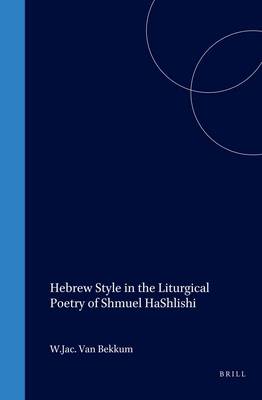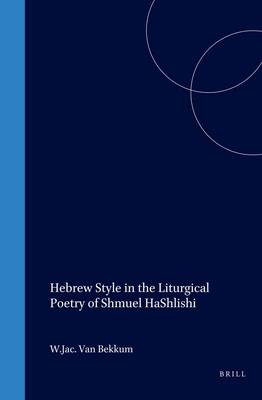
- Afhalen na 1 uur in een winkel met voorraad
- Gratis thuislevering in België vanaf € 30
- Ruim aanbod met 7 miljoen producten
- Afhalen na 1 uur in een winkel met voorraad
- Gratis thuislevering in België vanaf € 30
- Ruim aanbod met 7 miljoen producten
Zoeken
Omschrijving
Shmuel ben Hoshana, the most important Hebrew liturgical poet (paytan) in the final stage of the flowering of the Eretz-Israeli piyyut, came of age in the latter third of the tenth century. He was active in the academy of Eretz Israel, and reached the status of the third ("HaShlishi") in the assembly, after the gaon and the av bet din.
This volume examines the Hebrew style of this paytan according to some 650 Genizah fragments, which contain elements of his wide-ranging oeuvre (orthography and phonetics, morphology, syntax, sentences, vocabulary, themes and motifs).
Understanding the style of Shmuel HaShlishi is critical to our understanding of the creative activity of the paytanim of the final period of the flowering of the Eretz-Israeli piyyut. His style serves as a link between the Eretz-Israeli style of the early paytanim and the new style that would emerge in Spain.
This volume examines the Hebrew style of this paytan according to some 650 Genizah fragments, which contain elements of his wide-ranging oeuvre (orthography and phonetics, morphology, syntax, sentences, vocabulary, themes and motifs).
Understanding the style of Shmuel HaShlishi is critical to our understanding of the creative activity of the paytanim of the final period of the flowering of the Eretz-Israeli piyyut. His style serves as a link between the Eretz-Israeli style of the early paytanim and the new style that would emerge in Spain.
Specificaties
Betrokkenen
- Auteur(s):
- Uitgeverij:
Inhoud
- Aantal bladzijden:
- 378
- Taal:
- Engels
- Reeks:
- Reeksnummer:
- nr. 5
Eigenschappen
- Productcode (EAN):
- 9789004131514
- Verschijningsdatum:
- 9/07/2003
- Uitvoering:
- Hardcover
- Formaat:
- Genaaid
- Afmetingen:
- 183 mm x 247 mm
- Gewicht:
- 1192 g

Alleen bij Standaard Boekhandel
+ 628 punten op je klantenkaart van Standaard Boekhandel
Beoordelingen
We publiceren alleen reviews die voldoen aan de voorwaarden voor reviews. Bekijk onze voorwaarden voor reviews.








